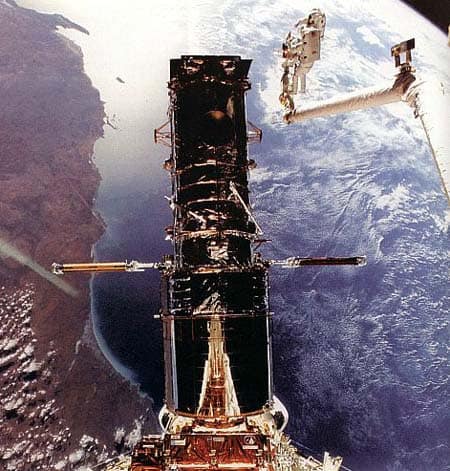On Monday exactly ten years ago the Hubble Space Telescope was launched after almost 20 years of planning and construction. Despite a series of problems with its solar panels, gyroscopes and, most famously, a mirror that would not focus, the telescope has been both a public and scientific success. "Hubble has made the major contribution to the public awareness of science," says Mario Livio, head of the science division at the Space Telescope Science Institute (STScI) in Baltimore, Maryland. "Hubble has done something that no other scientific experiment before it has done. It has literally transformed the way the public look at science."

Recently a “second decade” working group looked at the future of the billion-dollar telescope, which is funded by NASA and the European Space Agency. After ten years in orbit, what more can Hubble do? “A lot of little science has been explored with relatively short observation periods,” says Ethan Schreier, assistant director at the STScI, “but there is a lot of parameter space left if we look at large chunks of space for long periods of time. In the next decade we will try to do things with Hubble that we have not done before.”
The working group has made three main proposals: to increase infrared observations; to conduct more wide-field surveys; and to make greater use of the telescope’s archive of data. “We have so many terabytes of data in our archive that we should capitalize on that and see what new types of science we can do,” says Schreier, who is a member of the working group. Hubble will also be used more to complement observations made by other spacecraft.
The STScI has also given approval for more risky observations, such as plans to image Venus. Direct observations would melt the telescope because Venus is so close to the Sun. However, there are plans to point Hubble at Venus for no more than ten minutes during a period when the Sun is eclipsed by the Earth. “We actually have to relax some of the restrictions on pointing the telescope near the Sun for these observations,” says Melissa McGrath, who helps vet planetary observing proposals. “The approval process goes all the way to NASA headquarters.”
The ground operations related to observing “targets of opportunity” – unforeseen events such as supernova explosions – will also be revamped. In the past it took a day to reposition the telescope, which impacted on the observing schedule by as much as a week. Now the telescope can be back on the observing schedule in under a day.
However, as the number of staff working on the Next Generation Space Telescope (NGST) increases, there are worries about the impact on Hubble. “Hubble is very valuable,” says Schreier. “Targets of opportunity are very labour intensive and it would be disastrous if we made a mistake. It is a balancing act trying to match this with current cutbacks.”
But many astronomers are convinced that the telescope will survive for the whole of its extended lifetime. “I think that Hubble will do as much, if not more, in the next ten years as it has done in the past ten years,” says Livio.



